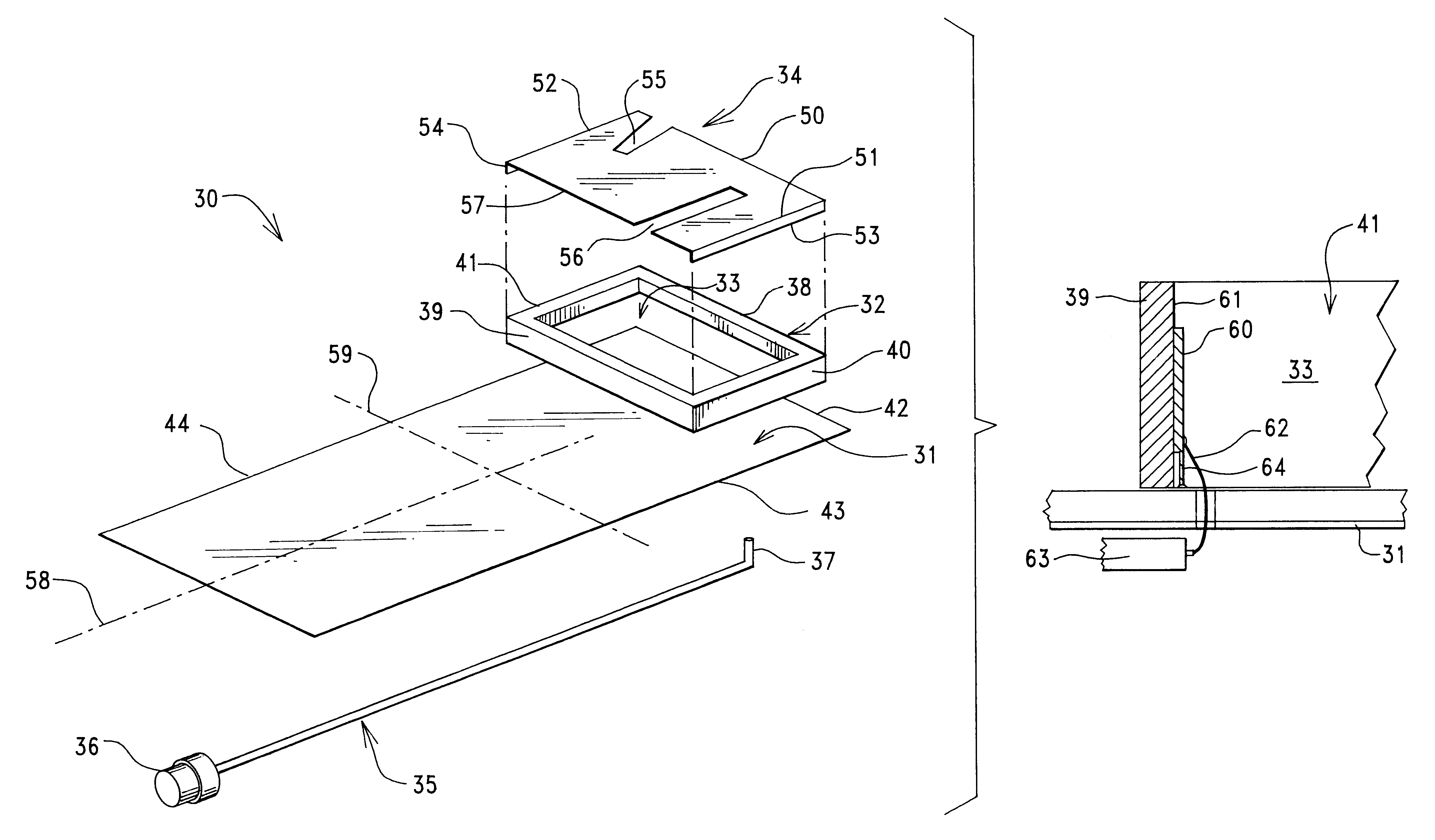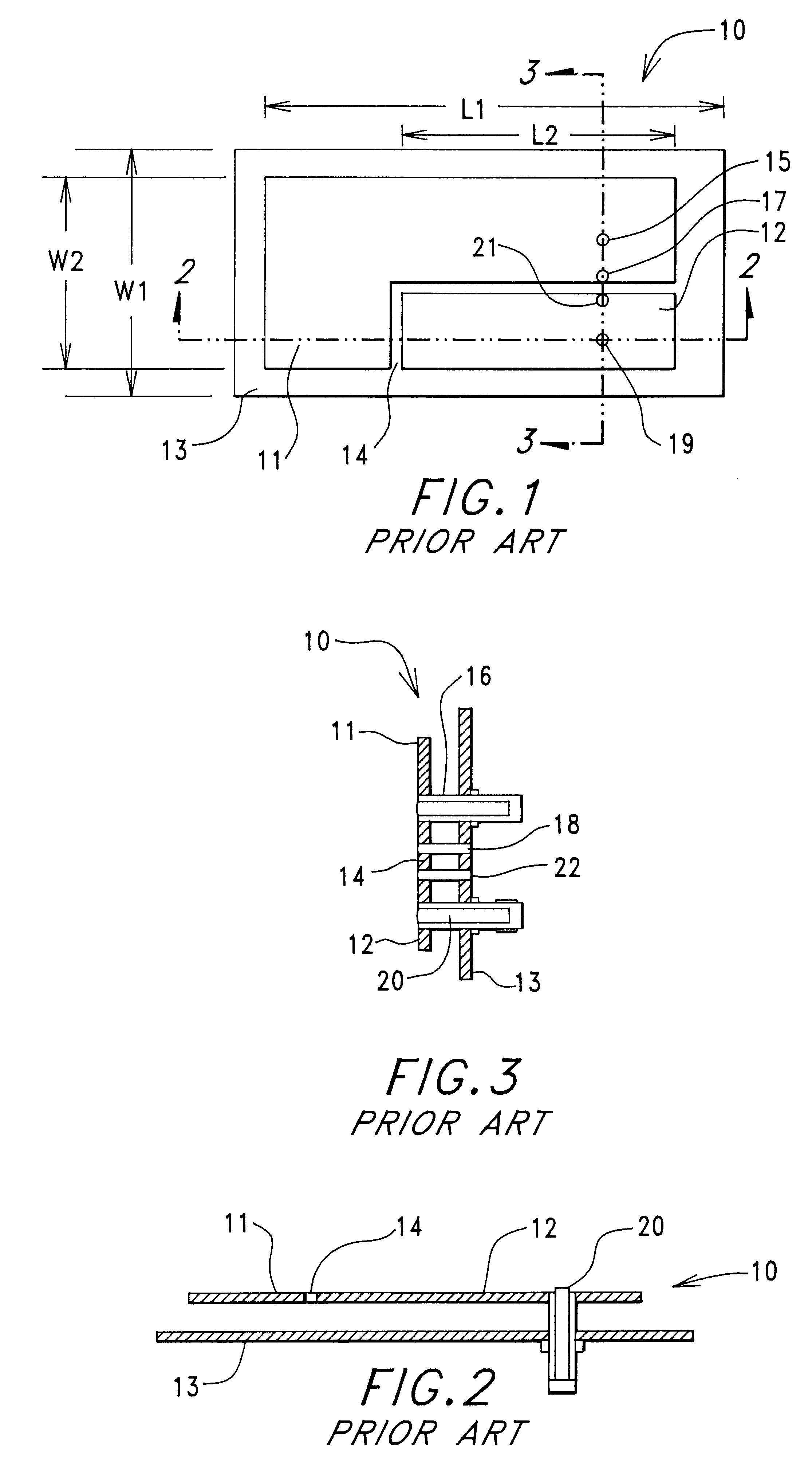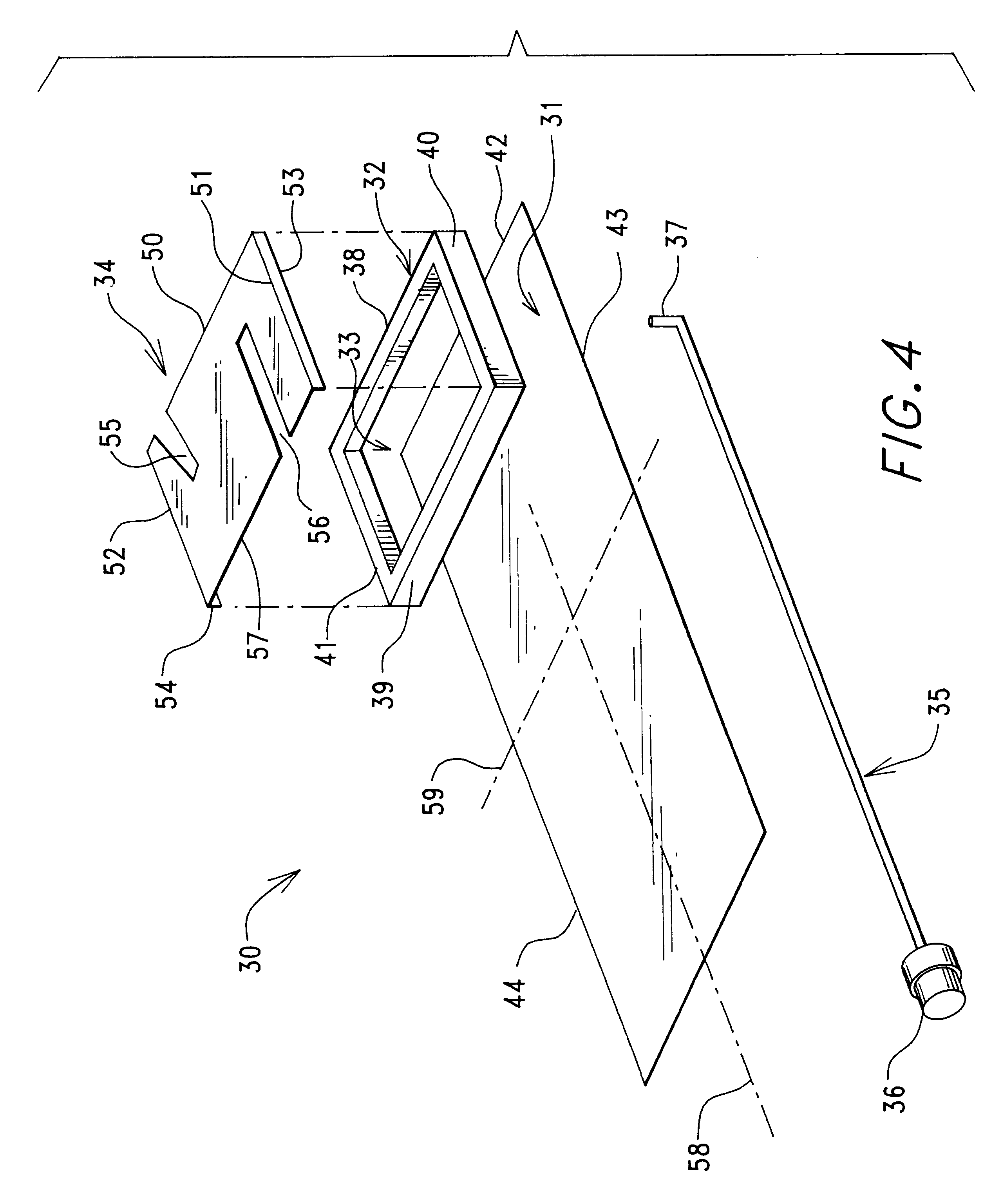Dual feel multi-band planar antenna
a multi-band, planar antenna technology, applied in the field of antennas, can solve the problems of multi-band pifa with multiple antenna feed ports may have its performance compromised, and complex antenna design
- Summary
- Abstract
- Description
- Claims
- Application Information
AI Technical Summary
Benefits of technology
Problems solved by technology
Method used
Image
Examples
Embodiment Construction
FIG. 4 is an exploded top and side view that shows only the PIFA portion 30 of a two-antenna assembly that is constructed and arranged in accordance with the present invention.
PIFA 30 includes four basic structural elements, i.e. (1) a rectangular, flat and metallic ground plane element 31, (2) a four-wall, box-shaped and relatively rigid dielectric carriage 32 whose four walls 38-41 define a box-shaped open cavity 33, (3) a generally flat and metallic radiating / receiving element 34, and (4) a coaxial feed cable 35 having an RF connector 36 at one end and an exposed and upward-extending centrally located metal conductor 37 at the other end.
The four side edges of radiating / receiving element 34 rest on and are physically supported by the top surface of the four walls 38-41 of dielectric carriage 32, such that a plane that is occupied by radiating / receiving element 34 is generally parallel to a plane that is occupied by ground plane element 31.
Ground plane element 31 is in the form of ...
PUM
 Login to View More
Login to View More Abstract
Description
Claims
Application Information
 Login to View More
Login to View More - R&D
- Intellectual Property
- Life Sciences
- Materials
- Tech Scout
- Unparalleled Data Quality
- Higher Quality Content
- 60% Fewer Hallucinations
Browse by: Latest US Patents, China's latest patents, Technical Efficacy Thesaurus, Application Domain, Technology Topic, Popular Technical Reports.
© 2025 PatSnap. All rights reserved.Legal|Privacy policy|Modern Slavery Act Transparency Statement|Sitemap|About US| Contact US: help@patsnap.com



